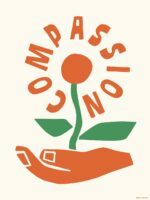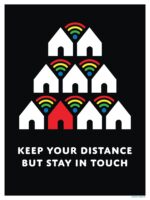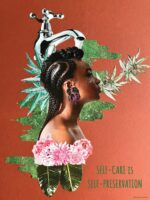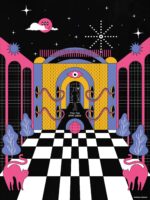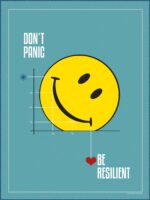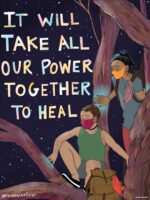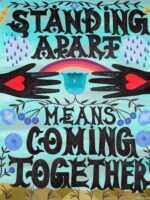Healing Our Roots: Ground and Balance by Integrating Traditional Practices Healing Our Roots: Ground and Balance by Integrating Traditional Practices
Stories from the Hearth
Hearth Summit Philippines Webinar Featuring:
Jo-Anne Suriel
Founder, Energetic Well; intuitive energy healer and guide, certified reiki master, sound therapy practitioner, and akashic records reader
🌍 Los Angeles, USA
Nick Daez
Entrepreneur, life coach, sound healer, yoga/meditation practitioner
🌍 Philippines
Valerie Dinglas Iafrate
Past and future life progression healer
🌍 Port Washington, USA
Ahead of Hearth Summit Philippines, the Filipino community has been gathering to explore key topics before reuniting on Siquijor island. In this webinar, discover different traditional Filipino healing practices that will be used during the summit.
Guided by healers from the diaspora and the Philippines, Jo-Anne Suriel, Nick Daez, and Valerie Dinglas Iafrate, this session combined healing practices (breathwork, cacao healing, sound healing) and shared experiences. In the group discussion, the panellists addressed the decolonization of healing practices, as well as ancestral healing and its relation to the five elements (air, fire, ether, water, earth).
Watch the webinar below.
Headshots via LinkedIn (Jo-Anne Suriel, Nick Daez, and Valerie Dinglas-Iafrate)
EXPLORE THE REGIONAL SUMMITS FURTHEREXPLORE THE REGIONAL SUMMITS FURTHER
Dive Into Stories From Around the World
Discover Wellbeing PracticesDiscover Wellbeing Practices
Discover other wellbeing practices from around the world.
From Fire to Flow: Hip Hop’s Power to TransformFrom Fire to Flow: Hip Hop’s Power to Transform
Stories from the Hearth
Hearth Summit Philippines Webinar Featuring:
Bambu
Beatrock Music Artist, father, Emcee, and Organizer
🌍 Oakland, USA
Marikit Satura
Hip Hop Artist and Activist
🌍 Amsterdam, Netherlands
Ever since hip hop as an art form emerged as a vehicle for social justice and cultural empowerment, Filipinos have been among the most active participants in DJing, breakdancing, graffiti and MCing. Filipinos have been part of the music scene since the 1960s, but in the 1980s, hip hop became even more a form of self-expression. Many Filipinos were able to create a sense of selfhood that might have otherwise felt trampled on or neglected by previous generations and institutional ideologies.
Ahead of Hearth Summit Philippines, the Filipino community has been gathering to explore key topics before reuniting on Siquijor island. In this webinar, explore the unique connection between the Filipino diaspora, hip hop music, and social change.
Featured Filipino artists Bambu and Mirikit discuss how they have used their artistry and music to create change and also work for peace. They share how the hip hop industry has impacted them, how they use it to impact others, how artists practice wellbeing, and what impact their music has had on the community.
Watch the webinar below.
EXPLORE THE REGIONAL SUMMITS FURTHEREXPLORE THE REGIONAL SUMMITS FURTHER
Dive Into Stories From Around the World
Discover Wellbeing and the ArtsDiscover Wellbeing and the Arts
Meet and hear stories from the changemakers championing wellbeing in music, dance and the arts.
Learning to Fly: Filipino Families, Mental Health, and Wellbeing Learning to Fly: Filipino Families, Mental Health, and Wellbeing
Stories from the Hearth
Hearth Summit Philippines Webinar Featuring:
Corazon Umali, MA
Special Education Expert, Teacher & Trainer, Co-Founder, Totz Learning Center
Kirin Macapugay, DSW
Professor of Human Services and Social Work; AANAPISI Title III Program Director, San Diego Community College
🌍 San Diego, USA
Marygrace Buendia
Fulbright Scholar
🌍 Los Angeles, USA
Macy Castañeda Lee
Co-Founder, Talang Dalisay and photographer
🌍 Manila, Philippines
Ahead of Hearth Summit Philippines, the Filipino community has been gathering to explore key topics before reuniting on Siquijor island. In this webinar, the journey to Siquijor begins in celebration of the newest book for Talang Dalisay’s Project Tala at Libro (Project Star and Book), “Bayani Magalang,” that tells the story of the power of respect and kindness in times of conflict, bullying, and violence.
Featured speakers Corazon Umali, MA Special Education Expert, Teacher & Trainer, Co-Founder, Totz Learning Center; Kirin Macapugay, DSW, San Diego Community College Professor and Human Services, Social Work and AANAPISI Title III Program Director; Marygrace Buendia, Fulbright Scholar; and Macy Castañeda Lee, Co-Founder, Talang Dalisay and photographer; discussed how the themes of the story relate to Filipino families everywhere.
Focusing on how to support families and promote intergenerational healing, the discussion engaged in activities and coping skills, especially for children and youth, that incorporate Sikolohiyang Pilipino (Filipino Psychology).
Watch the webinar below.
EXPLORE THE REGIONAL SUMMITS FURTHEREXPLORE THE REGIONAL SUMMITS FURTHER
Dive Into Stories From Around the World
Discover Wellbeing Movement in Asia and the PacificDiscover Wellbeing Movement in Asia and the Pacific
Meet and hear stories from the changemakers championing wellbeing in Asia and the Pacific.
The Filipino Changemakers Embracing Siquijor’s Traditional Healing PracticesThe Filipino Changemakers Embracing Siquijor’s Traditional Healing Practices
Talang Dalisay’s Macy Castañeda Lee Captures the Stories of the Island’s Most Sought-After Healers Ahead of Hearth Summit Philippines
Stories from the Hearth
Photo Essay From:
Macy Castañeda Lee
Co-Organizer of Hearth Summit Philippines 2025
🌍 Manila, Philippines
In July, I travelled to Siquijor Island, a Philippine island province located within the Negros Island Region. This beautiful and lush province lies in the south of Cebu, southeast of Negros Oriental, southwest of Bohol, and the North of Mindanao. I travelled there to help plan and organize Hearth Summit Philippines, alongside many passionate and dedicated Filipinos, Filipino Americans, and Americans.
From 14-17 January 2025, Hearth Summit Philippines will be the first regional wellbeing summit for social change held in the Philippines. The summit will be one of dozens of regional gatherings held around the world where changemakers are reflecting on, among many things, how embracing and reconnecting with local cultures and traditions can help inspire their social change work.
We are so excited to centre Hearth Summit Philippines on native Filipino healing practices, embracing lunas, the Tagalog word for “remedy” or “cure”. But like many words without a direct translation, lunas is more than that: it is an antidote, a medicine for what ails you in the broadest sense; the answers to help you get through a hard time. Lunas is an exhale after a long day, a comfort for weary souls, a balm for broken hearts, a practice of hope, and an invitation to come sit next to the fire with your loved ones.
In this sense, Lunas Pilipinas is our Indigenous/native/cultural understanding of the Hearth Summit Philippines, where we will engage 150 changemakers in an immersive journey to build a world that nurtures the wellbeing of our communities and the planet. Nestled in the lush Central Visayas region of Siquijor, the island’s unique cultural heritage and natural landscapes inspire our gathering. Once known as the mystical “Island of Fire”, Siquijor shares a rich history of traditional healing practices and environmental conservation – making it the ideal place to explore indigenous ways of knowing and their impact on our wellbeing.
Lunas is more than that: it is an antidote, a medicine for what ails you in the broadest sense; the answers to help you get through a hard time.
Lunas is an exhale after a long day, a comfort for weary souls, a balm for broken hearts, a practice of hope, and an invitation to come sit next to the fire with your loved ones.
To bring the wisdom of our native practices to our gathering, Lunas Pilipinas is a broad co-creation with many stakeholders, including my mental health organization, Talang Dalisay; the Siquijor Healers Association; local peoples; and other non-profits to help the Siquijor community, specifically its children and education.
Aside from working in advocacy and organizing, I also work as a documentary photographer. Ahead of the Summit, it was important for me to make sure I documented the Siquijor healers and highlight their work and identities. Annie, one of the leaders of the Siquijor Healers Association, is one of the key characters in this story. She lovingly invited us into her home up in the mountains to observe her healing process, to experience this healing ourselves, and to share her story. These images below are from those interactions at her home, where two other healers came to meet us; as well as some images from surrounding areas the Lunas Pilipinas team explored around the island.
The wisdom of the Siquijor healers and the island itself will be deeply present at Lunas Pilipinas and beyond, inspiring our journeys in wellbeing and welldoing.
To learn more about the Summit and how you can participate, visit lunaspilipinas.com.

Butterfly larvae at a local butterfly farm in Siquijor. A part of the agenda of our trip as a team was to find feasible venues to host workshops and make participants interact deeply with local nature spots. This imagery caught my eye: it’s so symbolic of how aligned and grounded this island makes you feel. This is the start of the photo sequence; the budding of it all.

These are three of the oldest and most experienced Siquijor healers in Annie’s home in Siquijor.

The outside of Annie’s home. She lives on top of the mountain on Siquijor Island. She houses several chickens, piglets, bunnies, and cats. She lives with her family here, and community friends come often to the outdoor area to chat and hang out.

This is the entrance to Annie’s home, just outside of the room where she conducts her healing sessions. Many religious icons can be seen, such as statues of Mother Mary and Jesus Christ, reflecting the dominant religion that exists in many parts of the Philippines, which is Catholicism. Many Filipinos are both religious and spiritual.

Bolo Bolo
Annie healing one of our main Hearth Summit Philippines leaders and organizers, Renee. Annie blows river water with black stones in a clear glass with a bamboo straw. This is called the bolo bolo healing method, used to heal the patient from evil spirits and energy.

Here is a photograph of some oils that Annie makes, all sourced locally in Siquijor.

One of the healers, just outside Annie’s home. He has been working as a native healer for more than 20 years.

A Global Calling
Sessions at Annie’s home continue all day. Annie receives clients from all around the world, as she is one of Siquijor’s most sought-after healers.

The bed where Annie and her family use to lay and rest, but also for her clients and visitors. Light and shadows in her home fall very beautifully. Annie mostly relies on natural light in her home.

One of the healers, just outside Annie’s home. He has been working as a native healer for more than 20 years.

Mothering
The sequence ends here, with one of Annie’s pigs with her piglets, right outside her home. The family has been raising all kinds of animals for the longest time. This photograph is so symbolic to me as it reflects the many people that Annie helps feed and grow. She is the mother of many in Siquijor island, after all. Life continues, life provides. When one gives, many grow.
We are all so excited to share more about Filipino culture and wellbeing practices with the world.
Hearth Summit Philippines (Lunas Pilipinas) will take place from 14-17 January 2025 in Siquijor, Philippines. For more information, including how to participate, visit lunaspilipinas.com and find us on social media at @lunaspilipinas.
About Macy Castañeda Lee
Macy (they/them) is a non-binary Filipino photographer, organizer, public speaker, & curator. They focus on advocating for psychology, mental health, social justice, and education in the work they do.
Passionate about human beings, identity, vulnerability, and the mind, Macy calls themselves a “student for life”, consistently challenging the relationship between our external world with our internal one. With an early exposure to students with mental exceptionalities such as autism & down syndrome, Macy advocates for creating a more kind & empathic world through multi-media storytelling & research. They study how factors such as cultural movements, generational trauma, & societal norms affect the inner workings of our mind. In turn, they hope to share how humans are active agents that turn those factors over to the next generation & how important it is for one to break stigma in order to create more sustainable futures.
They run and founded a Philippine based non-profit, Talang Dalisay alongside its special project based organization, Bayan Kinaadman. They are the head curator & organizer of Worlds Through Minds, which is a people funded photography gallery and photo publication house which takes place around the world.
To date, they have organized & hosted over 50 community events online & in-person, given over 100 keynote speeches, written & copy edited over 30 articles, and worked & collaborated with around 200 non-profits/movements/individuals for their cause & passion.
About Talang Dalisay
Talang Dalisay is a non-profit organization founded in Manila, Philippines centering on mental health for our fellow Filipinos. We are a young community of storytellers and change-makers, opening conversations on the current mental health stigmas in the country as well as aiding in the integration of persons with disabilities (PWDs) as members of our global community.
Our mission upholds the values of empathy, compassion, and empowerment. We aim to focus on action oriented projects that center on moving towards a society that validates the mental health and neurodivergence of Filipinos. We acknowledge that mental health is a systemic issue — it is an ever-changing and controversial topic especially as a BIPOC community. Thus, through our art and stories, we hope to create a higher consciousness and understanding of how to create inclusive spaces for all amidst these intersectionalities.
Our vision as an organization is to become a stepping stone for Filipinos to create spaces of inclusivity. Collectively, we hope to amplify the individual’s potential to shine purely; living in authenticity, truth, and purpose. Through our projects in elevating the mental health discourse, we hope to be one of many facets that encourage others to create more avenues for positive change, always embracing the ability in any disability.
To date, they have organized & hosted over 50 community events online & in-person, given over 100 keynote speeches, written & copy edited over 30 articles, and worked & collaborated with around 200 non-profits/movements/individuals for their cause & passion.
EXPLORE THE REGIONAL SUMMITS FURTHEREXPLORE THE REGIONAL SUMMITS FURTHER
Dive Into Stories From Around the World
Discover the Wellbeing Movement in AsiaDiscover the Wellbeing Movement in Asia
Meet, hear stories, and learn from the changemakers championing the wellbeing movement in Asia.
Peace of Mind: The True Essence of Self-CarePeace of Mind: The True Essence of Self-Care
Stories from the Hearth
This blog was originally published by Talang Dalisay, the Philippines’ first youth-led education- and storytelling-focused mental health non-profit and a co-creator of Hearth Summit Philippines.
When was the last time you felt stressed out?
Perhaps it was when you missed your alarm for your morning lectures, felt disoriented, and ran late. It could’ve been when you were up all night cramming your written paper due at 11:59 pm, which, by the way, was given a week ahead of time. This feeling of panic has overwhelmed you;, your palms sweating, and your whole body trembling, yet you can’t help but feel a sense of familiarity from what you are experiencing. In fact, this pang of stress is something you’re already so familiar with. You don’t feel a tinge of shock at all.
When did it come to this point?
We have all grown so accustomed to these exhausting, tiresome, sentiments to the point where we can’t even tell the difference between a healthy and toxic mindset anymore. According to a report done in 2021 by researchers from VAAY, a German CBD company, Manila ranked as the third most stressful city in the world. The Filipino netizens who were interviewed mentioned how, due to the pandemic, it has become extremely easy for them to lose sight of the ever-present elements that surround and impact them on a daily basis (Chua, 2021). This goes to show how blindsided everyone is when it comes to their own thoughts and feelings, much like a mindless zombie.
So, indulge in my words for a minute. Allow yourself to sit back in any comfortable position and close your eyes. Take a deep breath and silently count to four as you inhale. Hold your breath for seven seconds, and then breathe out completely as you count to eight. Repeat these steps three to five times, and open your eyes. You may have not realised this, but the short breathing exercise you just practised is an easy but effective form of self-care! As you can see, it can be that simple, but that’s what the $450 billion self-care market doesn’t want you to realise.
To them, your vulnerability equals profit. Without this perception of having to rely on thousands of pesos worth of products and treatments, the self-care industry is worth nothing. This is why influence is the most important and crucial thing to them.
Social media has been feeding us this ideology that self-care is spending a day getting mani-pedis, having a huge makeover, going on a shopping spree, or simply anything related to scented candles. Don’t get me wrong, all of the self-help activities I mentioned are great but it’s important to note that this is not all that self-care is. If we continue to chase these “perfect” ideas of self-care but do not actually use them as a way to cope with our daily stressors to support ourselves, then what is the point?
There is no set list of instructions we need to follow in order to practice self-care, as self-care is not one size fits all; what works for someone might not work for you, and what works for you might not work for them, and that’s completely okay. Self-care isn’t simply doing what works for everyone else; it is practising restorative activities to take care of oneself for the betterment of one’s own physical, mental, and emotional welfare. You define what self-care is to you.
From playing with your pets, taking a hot shower, reading a book, and sleeping, to going for walks outside, taking free pottery classes, and working out; all of these activities are just a few of the thousands of other things you can classify as self-care. You don’t necessarily need to follow whatever self-care routines you see on Youtube or Instagram step-by-step. This is just a reminder that we are all separate individuals who have different ways of coping, so setting yourself up to strictly follow other people’s self-care routines is wrong. Self-care is not supposed to be a goal, but a mindset a person acts on for themselves.
“It is not selfish to love yourself, take care of yourself, and to make your happiness a priority. It’s necessary.” Self-care is not self-indulgence, but a form of self-preservation. It is not pushing others aside for oneself either. It is simply taking a step back and saying “me too”.
Sources:
Chua, P. (1970, January 1). Manila was just ranked the third most stressful city in the world. Esquiremag.ph. Retrieved December 18, 2021, from https://www.esquiremag.ph/culture/lifestyle/the-most-stressful-cities-index-2021-a00297-20210620
Cabico, G. K. (n.d.). Philippines among most stressed, emotional countries – Gallup report. Philstar.com. Retrieved December 18, 2021, from https://www.philstar.com/headlines/2019/04/26/1912816/philippines-among-most-stressed-emotional-countries-gallup-report/amp/

About Talang Dalisay
Talang Dalisay is a non-profit organization founded in Manila, Philippines centering on mental health for our fellow Filipinos. We are a young community of storytellers and change-makers, opening conversations on the current mental health stigmas in the country as well as aiding in the integration of persons with disabilities (PWDs) as members of our global community.
Our mission upholds the values of empathy, compassion, and empowerment. We aim to focus on action oriented projects that center on moving towards a society that validates the mental health and neurodivergence of Filipinos. We acknowledge that mental health is a systemic issue — it is an ever-changing and controversial topic especially as a BIPOC community. Thus, through our art and stories, we hope to create a higher consciousness and understanding of how to create inclusive spaces for all amidst these intersectionalities.
Our vision as an organization is to become a stepping stone for Filipinos to create spaces of inclusivity. Collectively, we hope to amplify the individual’s potential to shine purely; living in authenticity, truth, and purpose. Through our projects in elevating the mental health discourse, we hope to be one of many facets that encourage others to create more avenues for positive change, always embracing the ability in any disability.
EXPLORE THE REGIONAL SUMMITS FURTHEREXPLORE THE REGIONAL SUMMITS FURTHER
Dive Into Stories From Around the World
Discover the Wellbeing Movement in AsiaDiscover the Wellbeing Movement in Asia
Meet and hear stories from the changemakers championing the wellbeing movement in Asia.
How to Rest: Tips and Lessons From a WorkaholicHow to Rest: Tips and Lessons From a Workaholic
Stories from the Hearth
Reflections From:
Akasby Pante
Correspondent, Talang Dalisay
🌍 Parañaque, Philippines
This blog was originally published by Talang Dalisay, the Philippines’ first youth-led education- and storytelling-focused mental health non-profit and a co-creator of Hearth Summit Philippines.
School has always been stressful. It wouldn’t be school unless it made you want to pull all your hair out because of pure frustration. However, this year, we were faced with a new challenge: online school.
This new system has garnered various reactions from all kinds of students, with different personalities and learning styles. Some absolutely loathe it, claiming that they have to learn everything by themselves. Others enjoyed the freedom that comes with it, being able to take more control over how they spend their time. Fortunately enough, I am part of the latter group of people.
You can imagine just how excited I was at the beginning of the school year. I wanted to work out, journal, and read, all these things I thought I would be able to do, now that I had more time before classes. Even so, when school work started piling once again, these plans ultimately fell through. You know, just like every other year. And I thought I could just get on with it. Stick through the sleepless nights and the terrible feeling it left me with the day after. Not be able to work properly that same day because of how tired I was and watch my entire week spiral out of control.
But for some reason, I just couldn’t do it anymore. I couldn’t force myself to stay up until three in the morning when I knew how it would make me feel later that day. I couldn’t spend my entire weekend working instead of spending time with my family. I couldn’t deal with it.
For a while, I thought that I had become lazy. I was losing my focus and I had to get my life together. I soon realized that my body just couldn’t put up with that kind of torture anymore. It wouldn’t. So I had to come up with a plan to work around it, and preferably soon. Here’s what I came up with and maybe it can help you too.
Step 1: Rest
Drastically changing your workflow will not happen overnight. It takes time and mental energy to change a routine that is probably built upon years of habit. Therefore, if you can, try to take a break from the responsibilities that you can temporarily put off.
Obviously, you cannot let go of school or work, but there may be a few things you can hold off for the time being. Personally, I took a leave of absence from Talang Dalisay for an entire month. The amount of time you take off—as well as the activities you choose to take a break from—are ultimately up to you. For the most part, it will depend on the gravity of these responsibilities, how much time you think you can spare, and how much time you think you need in order to effectively “restart”.
However, the most important aspect of this step is that it will be able to achieve the following. First, it will give you time to rest and recharge. Second, it will allow you to focus on yourself and your improvement with reduced stress.
Step 2: Recalibrate
Now, I mentioned all these things about offloading some responsibilities and giving yourself time to focus on yourself. However, before you take action, there is one important step you need to do first: recalibrate. Change the way you think about your own personal productivity and work. Consider rest and fun as an integral part of your weekly agenda and treat it as if it is just as important as all your school requirements and extracurriculars. Because it is.
If you want to be able to produce quality outputs, the amount and kind of breaks you give yourself must be of the same standard. Doing this will prevent you from getting burnt out and keep motivated throughout the week.
Step 3: Reflect
After changing your mindset, it’s time to think about how exactly you are going to improve your work-life balance. What exactly are you going to change from your current routine and habits?
If you are not sure where to start, try searching online. There are so many videos, blogs, and books out there that can help you and give you a few suggestions. Try listening to their advice and try out their techniques. Reflect on what you think would best suit you considering your working methods, personality, and lifestyle.
It’s important to contemplate upon these things because it will help you realize what you could possibly change about your current working habits. For example, one rule I decided to set for myself is that I am not allowed to work during the weekends unless absolutely necessary (usually when there is just too much to do). This was something I decided to implement after I learned about Parkinson’s law which states that “Work expands so as to fill the time available for its completion”. Therefore, if I set a mindset that weekends “do not exist” then I will be able to finish all my tasks by Friday. Doing so has given me sufficient time to recharge as well as give me something to look forward to throughout the week.
Step 4: Realize
Once you’ve set a break period, changed the way you think about work, and figured out what changes you wish to make, it’s time to take action. Realize your plans. It definitely won’t be easy sometimes because as humans, we are creatures of habit. Consequently, it is so much easier to just fall back into our old routine. Nonetheless, you must remind yourself who you are doing this for. You. No one else but you. And you deserve nothing but the best.
As a notorious workaholic, I always thought that loving my work meant putting it above everything and everyone else. However, if there’s anything that the “reset” period has taught me is that my world must not only revolve around one single thing alone. As cliche as it sounds, there must always be a balance.
Before I end this article, I wish to leave you all with a quote. It is one that a close family member sent me during those difficult times which I also feel captures the essence of this piece quite perfectly: “A friendly reminder that “your best” doesn’t mean pushing yourself to your breaking point. “Your best” means the best you can do while being your best you. Get enough sleep, give yourself breaks, listen to your limits. “Your best” is better when you are happy and healthy.

About Talang Dalisay
Talang Dalisay is a non-profit organization founded in Manila, Philippines centering on mental health for our fellow Filipinos. We are a young community of storytellers and change-makers, opening conversations on the current mental health stigmas in the country as well as aiding in the integration of persons with disabilities (PWDs) as members of our global community.
Our mission upholds the values of empathy, compassion, and empowerment. We aim to focus on action oriented projects that center on moving towards a society that validates the mental health and neurodivergence of Filipinos. We acknowledge that mental health is a systemic issue — it is an ever-changing and controversial topic especially as a BIPOC community. Thus, through our art and stories, we hope to create a higher consciousness and understanding of how to create inclusive spaces for all amidst these intersectionalities.
Our vision as an organization is to become a stepping stone for Filipinos to create spaces of inclusivity. Collectively, we hope to amplify the individual’s potential to shine purely; living in authenticity, truth, and purpose. Through our projects in elevating the mental health discourse, we hope to be one of many facets that encourage others to create more avenues for positive change, always embracing the ability in any disability.










